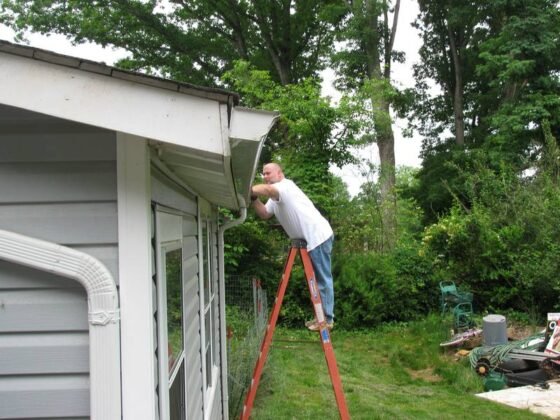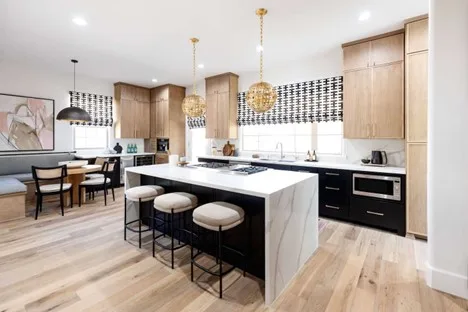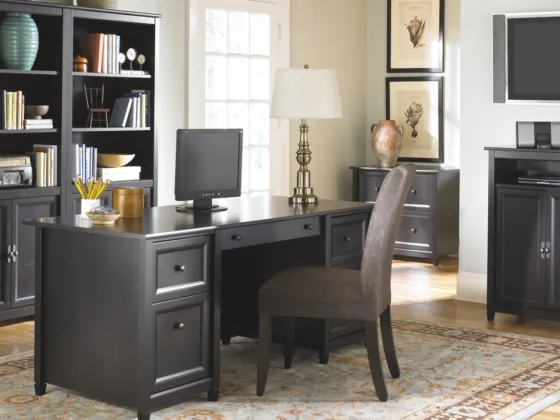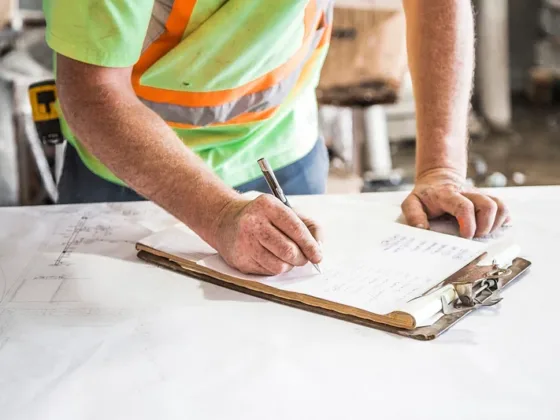Table of Contents Show
Here you will find a helpful guide on how to build a floating shelf, including step-by-step instructions that use a flat hollow core door for a shelf.
Learn how to build a floating shelf with no visible supports. It is perfect for displaying collectibles, knick-knacks or storing books and other items. You can use an old door for a shelf that will be painted, or use a new one and add trim and a face to create a final piece you’ll be proud to stain and show off.

How to Build a Floating Shelf
Learn how to build a floating shelf that looks great and seems to float on the wall without support. These shelves look amazing and they can hold plenty of weight. You can display your favorite collectibles, knick-knacks or sports memorabilia. These shelves are easy to build in a few hours.
Overview
A floating shelf appears to “float” on the wall without visible support. There are no ugly shelf brackets, legs or awkward supports to work around or distract from the items on the shelf. Make these functional and beautiful shelves from a hollow core door for a permanent installation or build them from scratch for a set of shelves you can take down and use over and over again. Here’s how to build a floating shelf from a hollow core door.
Read Also:
Cut the Door
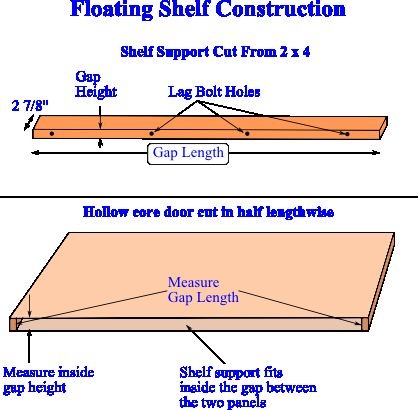
Cut an 18-inch hollow core door down the middle from top to bottom, leaving two 9-inch wide sides. A finishing blade in a circular saw against a straight edge is good for this task, but a table saw will work even better.
Measure between the two outside panels of the door to find the gap between them. Make this measurement at the top or bottom of the door next to the door frame. Measure the length of the gap between the top and bottom of the door’s frame. Between the panels, you’ll notice cardboard supports. Remove these to a depth of about 3 1/2 inches with a sharp chisel.
Make the Support
Cut a straight 2-by-4 to fit lengthwise into the gap between the two door panels, as if to fill the entire gap from top to bottom. Make it 1/2-inch shorter than the gap is long. On a table saw, rip the 2-by-4 down to 2 7/8 inches wide. Rip it a second time on the height to the gap width on the door. The shelf support should fit snugly, but not bulge the door panels when it is inserted.
Install the Support
Draw a level line on the wall the length of the shelf using a 4-foot level as a guide where the shelf will be installed. Find the studs along the line, marking both sides of each stud. Hold the shelf support against the line and mark the stud centers on the support. Drill a 7/16-inch hole through the support from edge to edge and into each stud. Fasten the support to the wall using 1/4 x 5 1/2-inch lag bolts.
Install the Shelf
Installing the shelf is the last step when building a floating shelf. Test fit the shelf by slipping it over the support and make any adjustments before installation. Apply yellow wood glue with a brush to the upper and lower side of the shelf support, and inside the shelf panels.
Slip the shelf over the support and make any side-to-side adjustment necessary, such as to align with another shelf. Use a 12-inch level to ensure the shelf is level from front to back and nail the shelf to the support with 3/4-inch brads on the top and bottom.
Custom Shelf
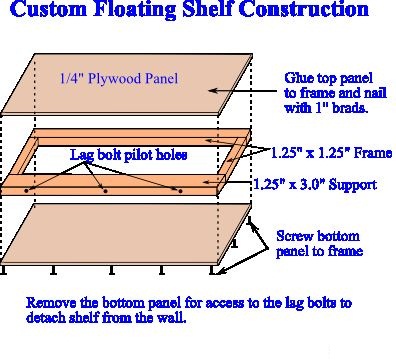
Because the shelf made from a hollow door is glued to the support, you won’t remove it without destroying it. Here’s how to build a floating shelf in a similar fashion. Cut an upper and lower panel from plywood and a frame from 2 x 2 and 2 x 4 lumber.
Glue and brad nail the top panel to the frame, but attach the bottom panel to the shelf with only wood screws — don’t use glue on the bottom. The lower panel can be removed at a later date for access to the lag bolts to remove the shelf from the wall.
References
- Build it With Ana: Floating Shelves, https://www.younghouselove.com/build-it-with-ana-floating-shelves/
- How to Build Adjustable Shelving
